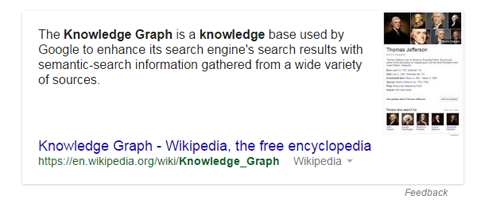Ever since the Internet began to take off in the late 1990s, business owners have been clamoring to establish their companies in an online form. The straightforward interface of traditional websites, which exist today in mostly the same format as they did in the 90s, has been a pleasant, predictable constant. Online users still access sites the same way-either by searching for them or plugging in the URLs directly-and business owners can count on their business websites generating new traffic, new interest and new sales (as long as they market them effectively).
However, the traditional website as we know it is gradually marching toward obsolescence, and if trends continue accelerating the way they have, we can expect them to disappear from our culture as early as 2020.
What a "Traditional" Website Entails
First, let me define what constitutes a "traditional" website, as most business owners already have a multifaceted Web presence. A traditional website is a dedicated domain (such as example.com) that hosts pages of content and information for a given brand, and can be accessed using a specific URL. They are independently hosted, and are typically accessed through some kind of Internet browser, either on a desktop or a mobile device.
Notice that this definition does not include independent online pages for a given business, such as a Facebook page or a Yelp profile; as we shall see, these are not declining toward obsolescence. Only traditional websites are.
The Demise of Traditional Websites in Search
There are two ways most people find and use traditional websites, and both are having a major effect on the visibility and longevity of websites as a medium. The first is, of course, search. When we're looking for new information, or for a particular product, we usually turn to Google (or another search engine) to lead us to a website that can get the job done.
There are three ways that search engines are forcing a decline in traffic to traditional websites.
First, and most importantly, the Google Knowledge Graph is cutting out the "middle man" that search results used to be. Rather than leading people to information on separately hosted websites, the Knowledge Graph is giving people information directly. Already, the Knowledge Graph is capable of providing accurate information on people, places, events and things, and it grows more sophisticated by the day. In time, the Knowledge Graph (see image) may be able to provide virtually limitless types of information-rendering websites that provide information unnecessary.

Second, Google and other search engines are relying on third-party databases and applications for more information than traditional websites. For example, it's more than possible-it's likely-that a well-reviewed business on Yelp will have their Yelp profile rank higher than their actual website. This downplays the importance of traditional websites in favor of listings with these types of organizations.
Finally, there's an ever-widening gap in the domain authorities of dominant online forces and emerging competitors. While Google does make efforts to boost the ranks of promising young domains, it's virtually impossible to unseat the long-standing brand champions that frequent the tops of the SERPs.
The Rise of Apps and the Internet Everywhere
Next, it's important to recognize that the way we use the Internet is changing. The second way people access traditional websites is by seeking them directly in an online browser. Today, we're using these online browsers less and less for our online needs, especially as we become more reliant on mobile devices.
Almost any online function you need, whether it's in the form of retrieving information or playing a game with a friend, can now be confined in app form. Rather than accessing a Web browser and typing a URL, people are getting used to the idea of maintaining a collection of apps relevant to them, and simply tapping on whichever one they need, whenever they need it. It's more convenient and more precise than the old way of managing bookmarks on a browser, and because the Internet is available practically 24/7 (compared to the old days of dial-up and unreliable router connections), people are using this method more often than ever.
Eventually, this trend will rise to a point where no matter what you need-whether it's store hours, product purchasing, or instant communication-it will be available through an app, rendering online browsers and traditional websites no longer necessary.
Why 2020?
We've been on this road for a long time now. Mobile user numbers have been rising steadily, year after year since 2007, and surpassed global desktop users early in 2014. There are no signs that this momentum will stop, and in fact, signs suggest that this growth will only accelerate in the coming years. If you assume this crossover point is a nexus in the comparative growth charts, it will be another seven years (or less) when mobile becomes so popular that desktop use is almost irrelevant-that puts us at 2020.
On the other side of the fence, we have the Google Knowledge Graph, which has been evolving steadily for about three years now. Already, its functionality and reach have exploded, and given another two full cycles of similar development (by 2020), it's reasonable to think by that time it will be providing answers for the vast majority of user queries.
Admittedly, this approach is not exactly mathematical. However, predicting the future is never a precise science. Instead, we must simply look at the trends leading up to this point and make the best guess we can about how they will continue to develop. Based on what I can see, the era of traditional websites is nearing its end, and it's time to start preparing for the future.
Larry Alton is a professional blogger, writer and researcher who contributes to a number of reputable online media outlets and news sources. In addition to journalism, technical writing and in-depth research, he's also active in his community and spends weekends volunteering with a local non-profit literacy organization and rock climbing. Follow him on Twitter and LinkedIn.
